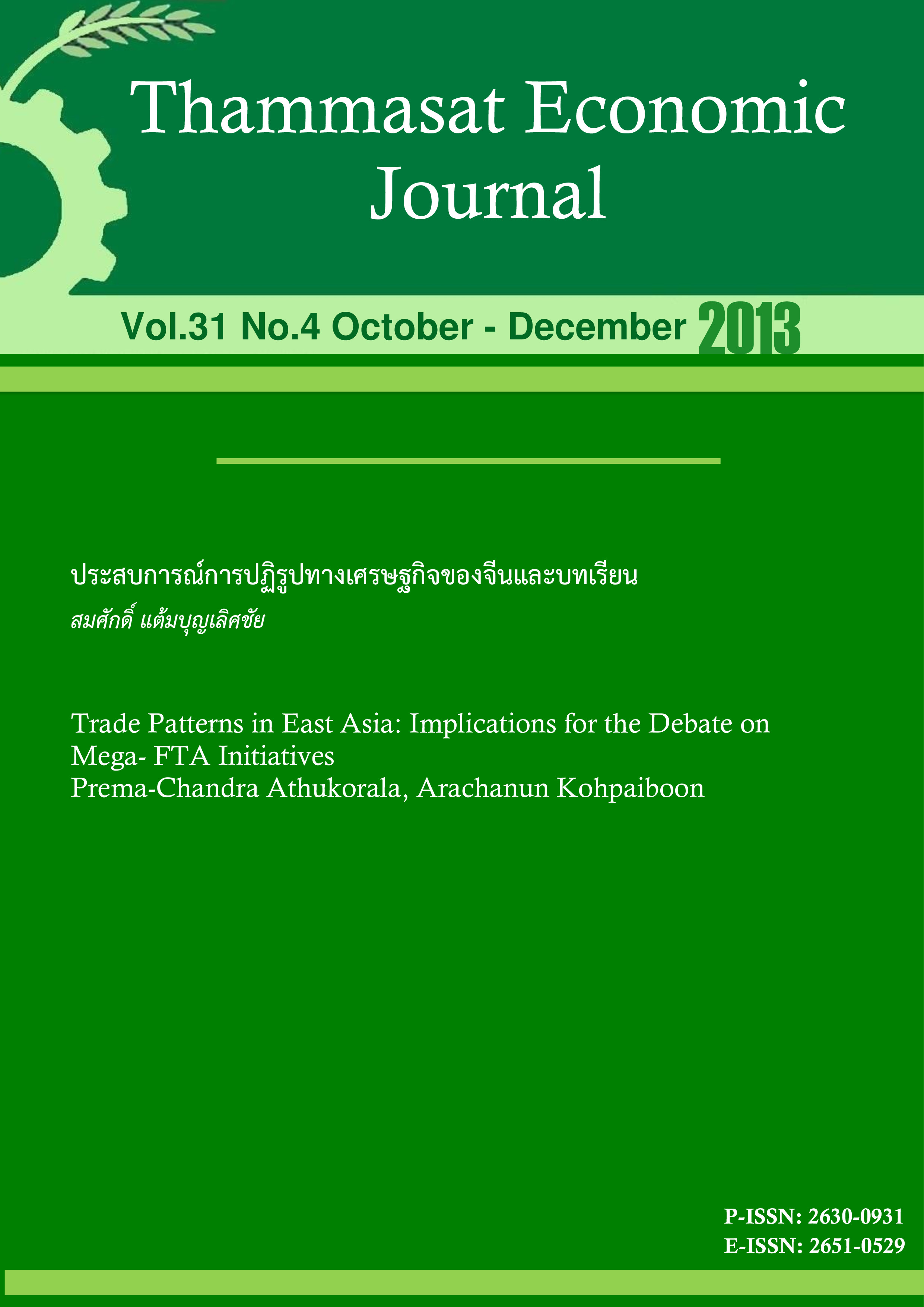Trade Patterns in East Asia: Implications for the Debate on Mega- FTA Initiatives
Abstract
This paper documents and analyzes emerging trade patterns in Asia, with special reference to the implications of the development of global production sharing with a view to informing the contemporary policy debate on forming two mega-FTA initiatives, Trans-Pacific Partnership (TPP) and Regional Comprehensive Economic Partnership (RCEP). The analysis reveals that the degree of dependence of these countries on this new form of global division of labour in East Asia is much larger compared to Europe and North America. Global production sharing has certainly strengthened economic interdependence among the countries in the region, but the dynamism of the regional cross-border production networks depends inexorably on global, rather than regional, trade in final goods. The findings of this paper make a strong case for a global, rather than a regional, approach to trade and investment policy making.
References
2.Athukorala, Prema-chandra and Archanun Kohpaiboon (2011), ‘Australia-Thai Trade: Has the Free Trade Agreement Made a Difference?’, Australian Economic Review, 44(4), 457-67.
3.Athukorala, Prema-chandra and Archanun Kohpaiboon (2013), ‘‘Global Production Sharing, Trade Patterns and Industrialization in Southeast Asia’ in Ian Coxhead (ed.), Handbook of Southeast Asian Economies, London: Rutledge (forthcoming).
4.Athukorala, Prema-chandra and Nobuaki Yamashita (2008), ‘Patterns and Determinants of Production Fragmentation in World Manufacturing Trade’, in Filippo di Mauro, Warwick McKibbin and Stephane Dees (eds.), Globalization, Regionalism and Economic Interdependence, Cambridge: Cambridge University Press, 45-72.
5.Feenstra, RC, RE Lipsey, H Deng, AC Ma and H Mo (2005). World Trade Flows, 1962-2000. National Bureau of Economic Research (NBER) Working Paper 11040, Cambridge, MA: NBER. (https:/www.nber.org/papers/w11040)
6.Jones, Ronald W. & HenrykKierzkowski (2001a), ‘A Framework for Fragmentation’, in Seven Arndt and Henryk Kierzkowski (eds.), Fragmentation: New Production Patterns in the World Economy, New York: Oxford University Press, 17-34..
7.Jones, Ronald W. & HenrykKierzkowski (2001b), ‘Globalization and the consequences of international fragmentation’, in R. Dornbusch, G. Calvo & M. Obstfeld (Eds.), Money, factor mobility and trade: the festschrift in honor of Robert A. Mundell, Cambridge, Mass.: MIT Press, 365-381.
8.Kawai, Masahiro and Ganesh Wignaraja (2008), ‘Multilateralising Regional Trading Agreements in Asia’, in Richard Baldwin and Patrick Low (eds.), Multilateralizing Regionalism: Challenges for the Global Trading System, Cambridge: Cambridge University Press.
9.Kohpaiboon, A. and J. Jongwanich (2014), ‘Use of FTAs from Thai Experience’, Report submitted to Economic Research Institute for ASEAN and East Asia (ERIA), Jakatra.
Ng, Francis and Alexander Yeats (2003),‘Major trade trends in East Asia: what are their implications for regional cooperation and growth?’, Policy Research Working Paper 3084. Washington DC: World Bank.
10.Takahashi, Katsudide and Shujiro Urata (2008), ‘On the Use of FTAs by Japanese Firms’, RIETI Discussion Paper o8-E-002, Graduate School of Asia-Pacific Studies, Waseda University.
11.Yi, Kei-Mu (2003), ‘Can Vertical Specialization Explain the Growth of World Trade?’, Journal of Political Economy,111(1): 52-102.










